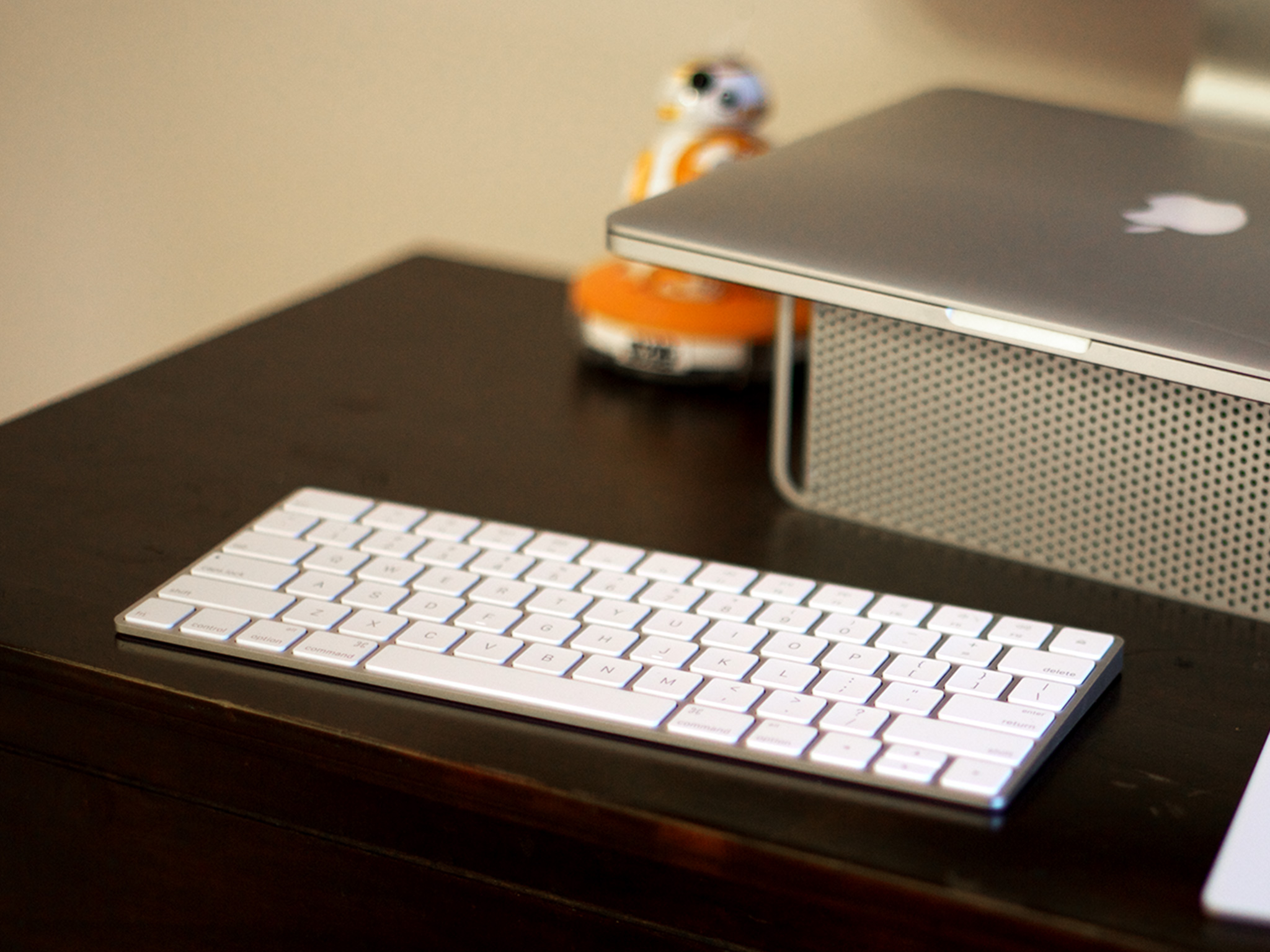
The Magic Keyboard is the newly redesigned, newly rechargeable version of the now classic Apple Wireless keyboard. It trades in the old cylinder-meets-plane construction for a solid wedge that has a shallower incline and smaller footprint. There's still no split, still no deep mechanical switches, still no backlight, and still no number pad, but there is a lithium-ion battery in place of the old AAs, and the ability to plug in over Lightning cable.
So does that make the Magic Keyboard simply newer or is it also substantially improved? And even if it's better, does that mean you should get it? Let's find out!
For people who want:
- An Apple wireless keyboard.
- Instant pairing with Mac.
- Minimal travel.
- Full-size keyboard with minimal footprint.
- Rechargeable lithium-ion battery.
Not for people who want:
- An inexpensive keyboard.
- A split, ergonomic keyboard.
- A clickity-clack mechanical switch keyboard.
- A number pad.
- Backlighting
Bottom Line
The Magic Keyboard takes the Apple Wireless Keyboard and makes it sleeker and slimmer. With a new scissor design, the keys are more stable and satisfying than ever. If you want split, deep, or number-pad design, you'll need to look elsewhere. If you love MacBook keyboards and want a consistent experience everywhere else, you'll want the Magic Keyboard.
Magic Keyboard Table of Contents
Magic Keyboard Design
The Magic Keyboard distils the physical keyboard down to its barest of essentials. The aluminum chassis is barely bigger than the keys it houses, measuring a scant 0.43 inches (109 mm) high at its tallest point, 4.52 inches (1149 mm) deep, and 10.98 inches (279 mm) wide, and weighing just 0.51 pounds (231 g). That's 13% smaller than the previous generation.
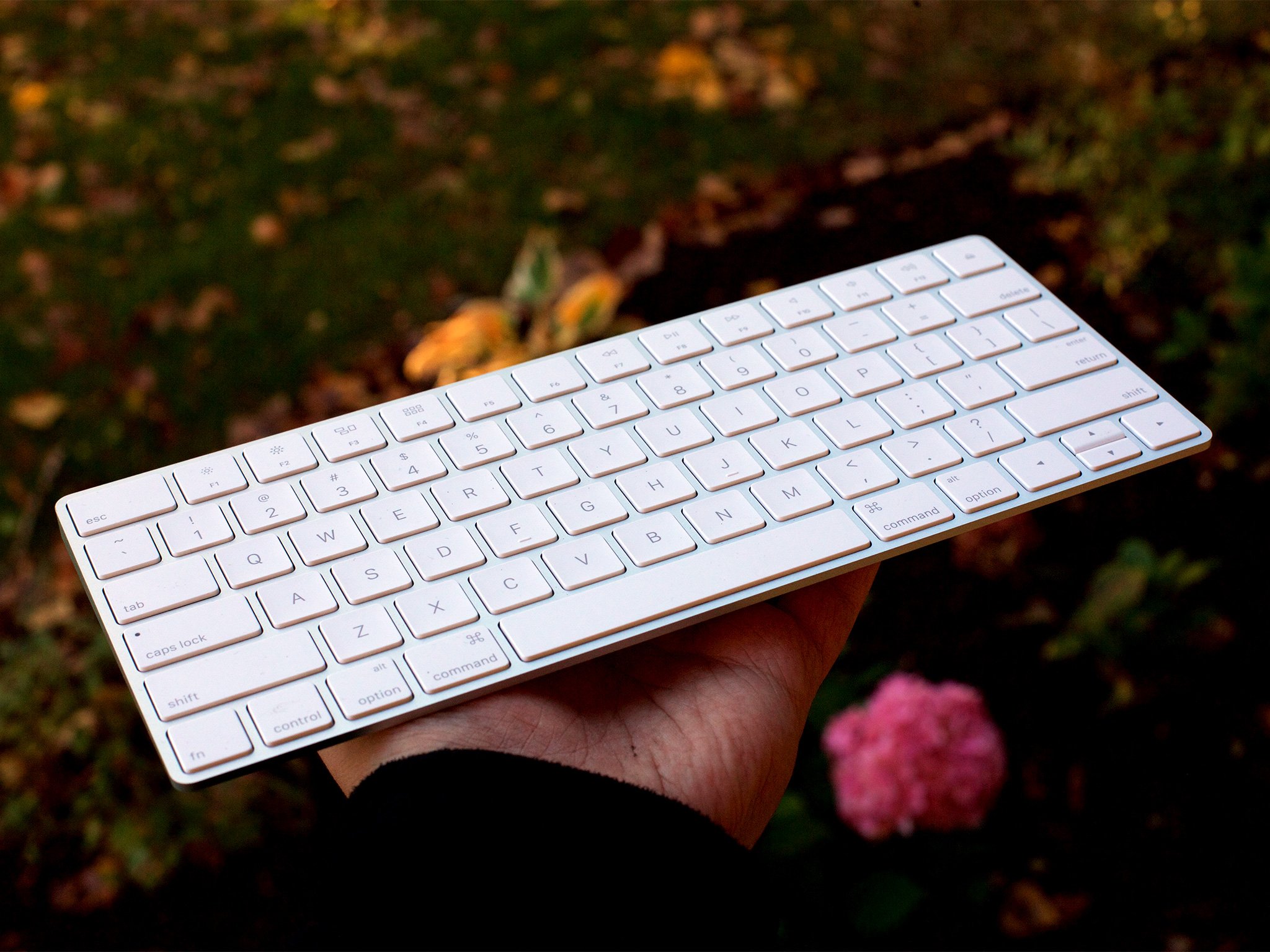
That previous generation, the Apple Wireless Keyboard, was introduced in 2007. To put it in context, that's the same year the original iPhone. In the time it's taken us to go from the Apple Wireless Keyboard to the Magic Keyboard, we've also gone to the iPhone 6s and iPhone 6s Plus.
Physically, the Magic Keyboard looks like the natural evolution of the Apple Wireless Keyboard. Remove the cylinder necessitated by the AA batteries, turn the plane into a wedge, so the keys are otherwise elevated, and the new design is, to quote one of Jony Ive's tenets, "inevitable".
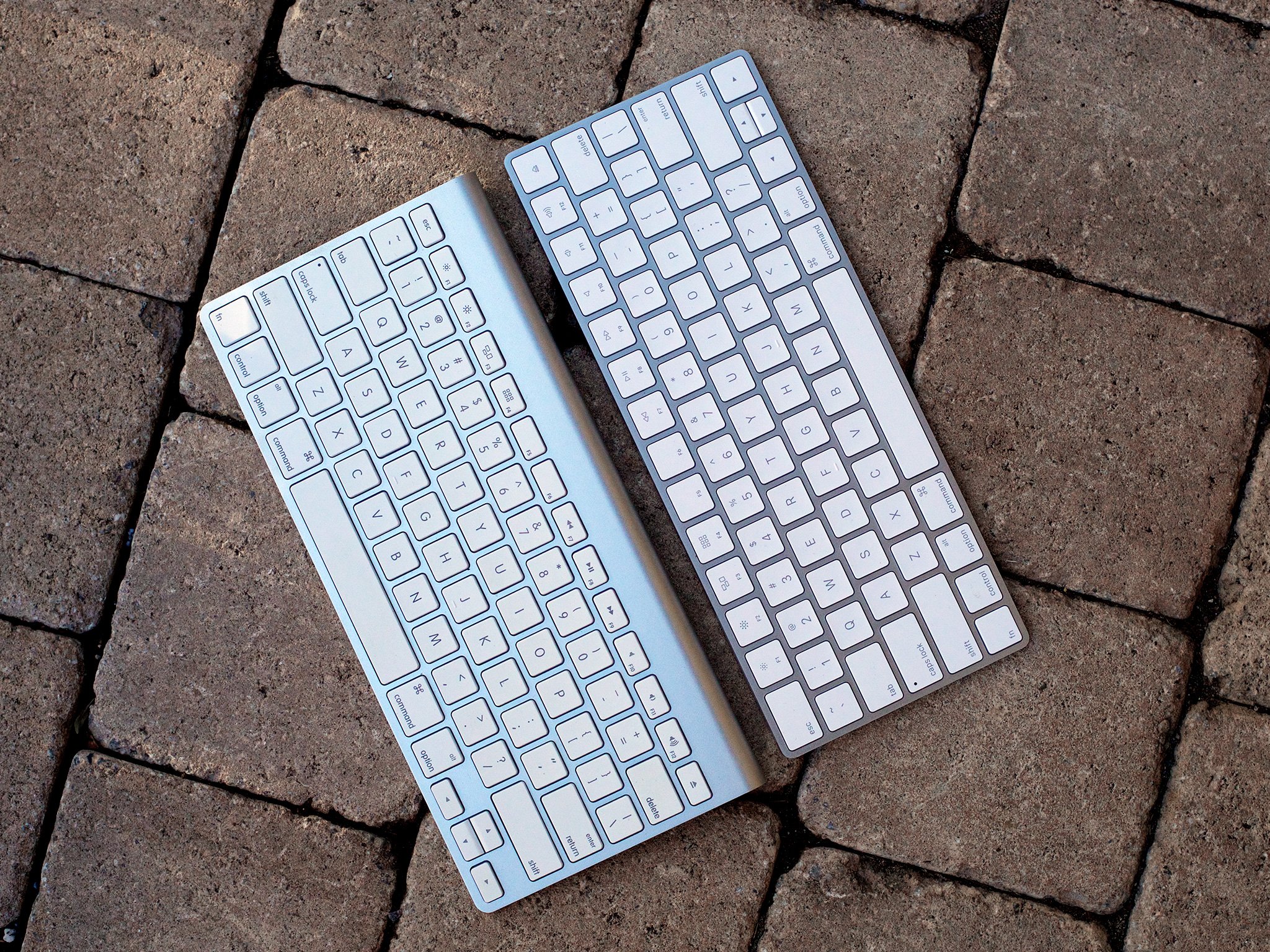
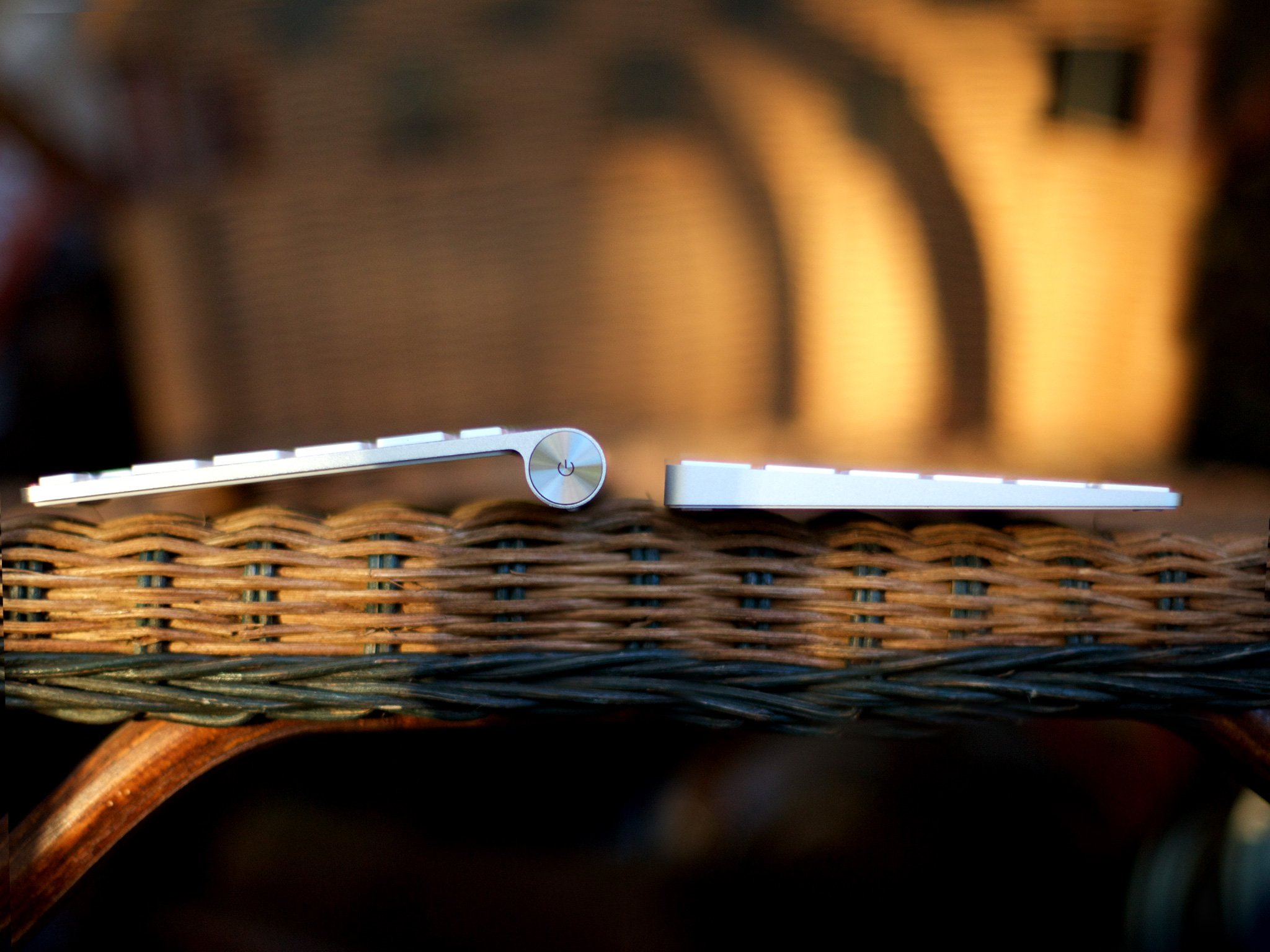
That's not all that's changed, though. There are full size function keys now, despite the smaller footprint. And there's a new scissor mechanism engineered for greater stability. 33 percent greater, according to Apple. It's new compared to the scissor mechanism used on current generation MacBooks Pro and MacBooks Air, though different from the also-new butterfly mechanism used on the new MacBook.
That's, perhaps, because the Magic Keyboard didn't to worry about thinness to the extent the MacBook did, and while the butterfly works wonderfully given that constraint, the scissor works better when there's no such constraint.
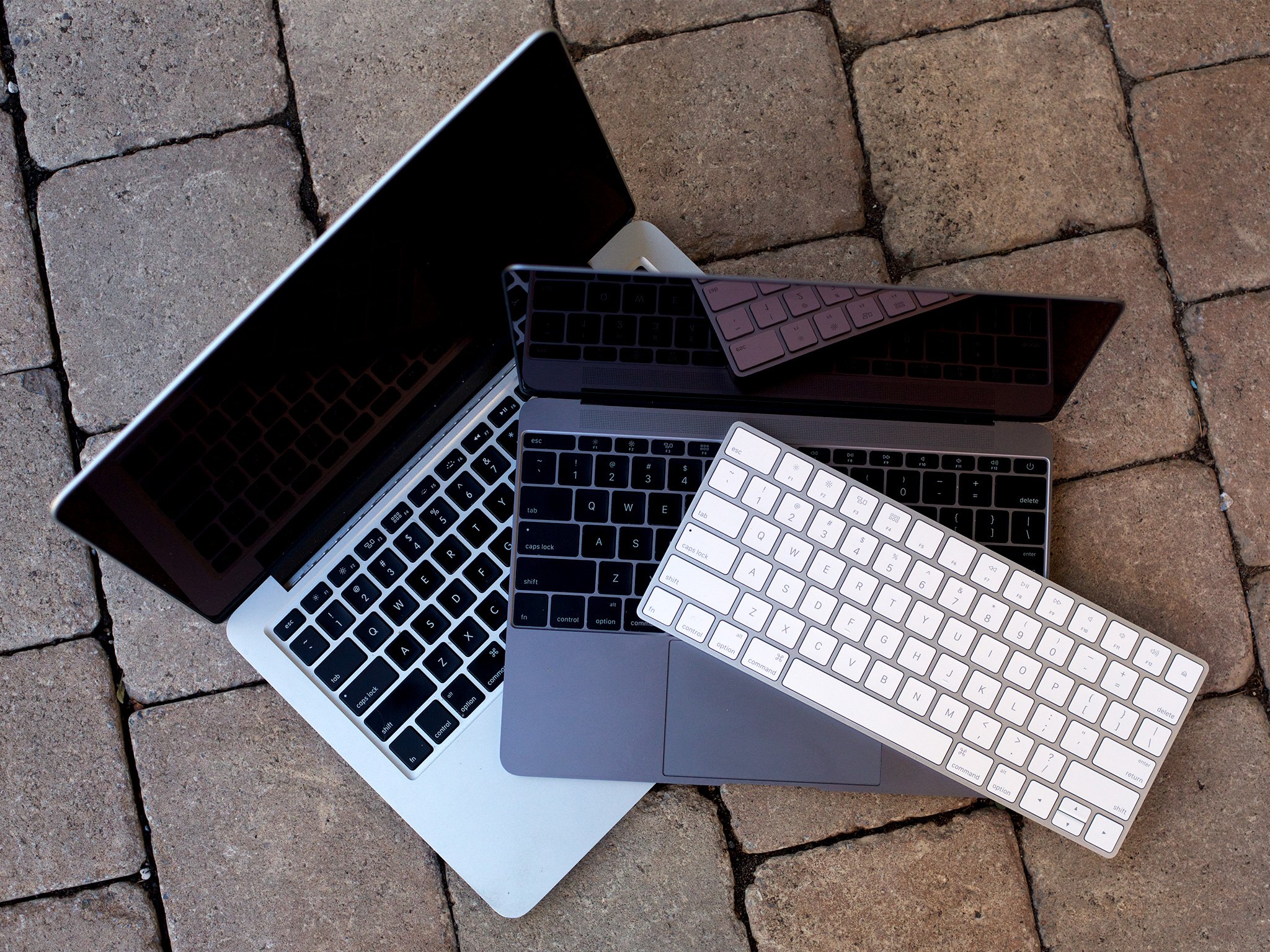
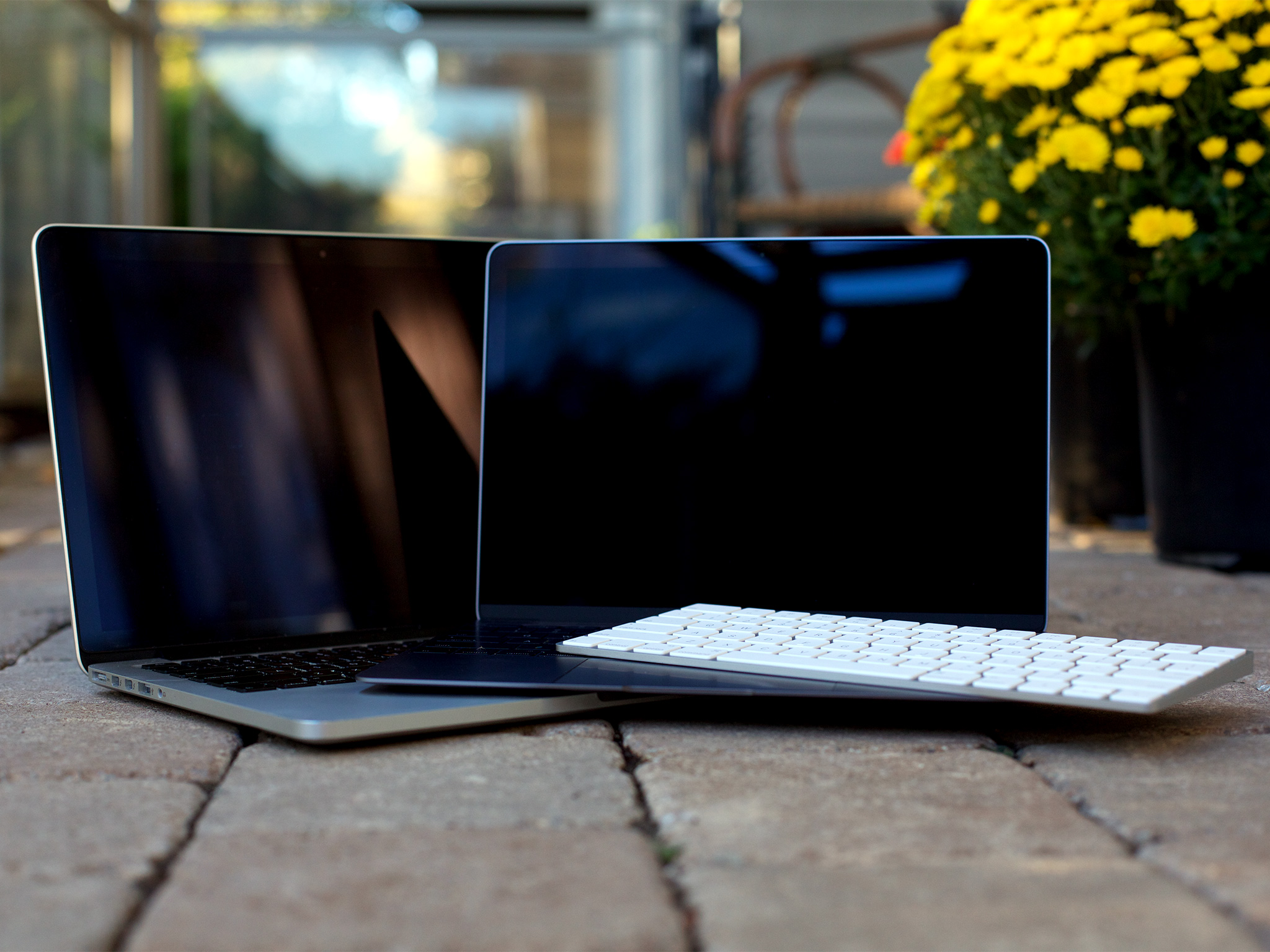
Apple won't win over any Extended Keyboard II fans with this design, of course. And they obviously don't intend to. The Magic Keyboard has moved far from the old typewriter and early personal computer keyboards and now has much more in common with laptop keyboards. Blame the fading memory of the former set against the increasingly popularity of the latter.
In fact, I find myself wishing the Magic Keyboard was even more like the MacBook keyboard. Aesthetically, I'd love for the keys to be black. That would be consistent and, frankly, badass.
Likewise the feeling. Right now the Magic Keyboard is somewhere between the MacBook Pro keyboard and the new MacBook Keyboard, which makes sense given the switch. But it does mean I notice whenever I change from one to the other. Context is important but all other things being equal, consistency is a user benefit.
For example, I still occasionally trip up on the arrow keys on both the Magic Keyboard and the new MacBook, and for the same reason—the new spacing eliminates tactile awareness. I think that's partly because the MacBook Pro still has the older arrow key layout, so I never really unlearn it.
That said, I like the direction Apple is going with keyboards. If the MacBook Pro were to get something closer to the Magic Keyboard in terms of stability and feel, I'd be thrilled.
Magic Keyboard Functionality
Bluetooth pairing has gotten much simpler. You detect the device and connect to it. No muss, no fuss, no prompt, no pin. But with the Magic Keyboard, like the other new Magic accessories, Apple has made it even simpler on the Mac.
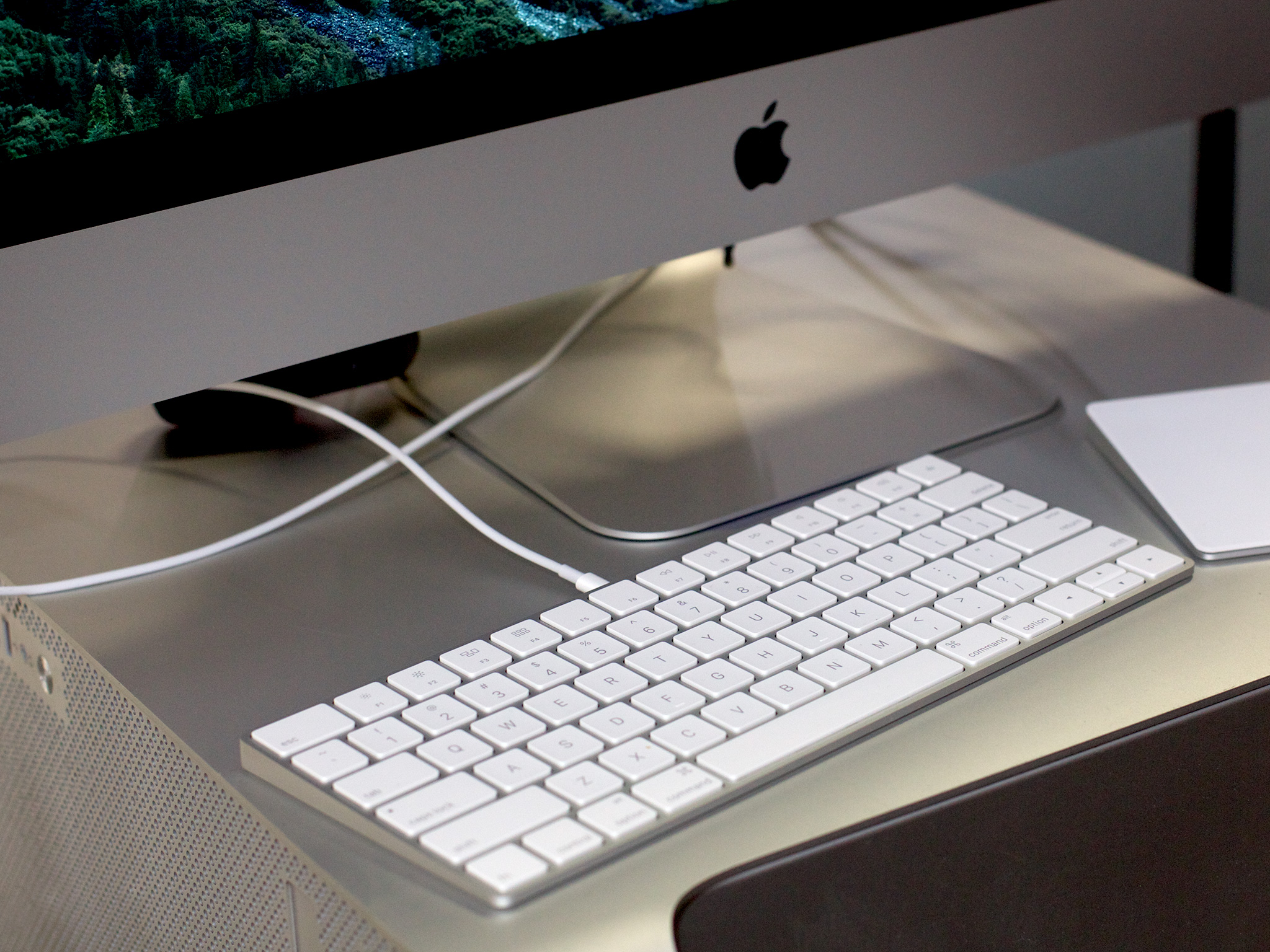
If you buy a new Mac that comes with the Magic Keyboard, it'll also come pre-paired. If you buy a Magic Keyboard for a Mac you already own, however, all you have to do is take the Lightning cable it comes with, plug the Lightning end into the keyboard and the USB end into the Mac, and you're paired. There's a notification confirming the pairing, but you don't even have to acknowledge it. You can just start typing.
That only works with the Mac, though. If you want to use your Magic Keyboard with your iPad, iPhone, or Apple TV, you still have to pair over Bluetooth.
I like that the process remains simple either way, but my inner security paranoia does worry about the lack of pin code. That's why, when I pair over Bluetooth, I do it immediately when I turn the Magic Keyboard on, and I do it when I'm alone.
Though not unique to the Magic Keyboard, iOS 9 for iPad adds two great new features for hardware keyboards. First, you can discover keyboard shortcuts simply by holding down a modifier key like command. Second, you can switch apps using the keyboard using the same command + tab metaphor as the Mac. Both make the keyboard experience on the iPad even better.
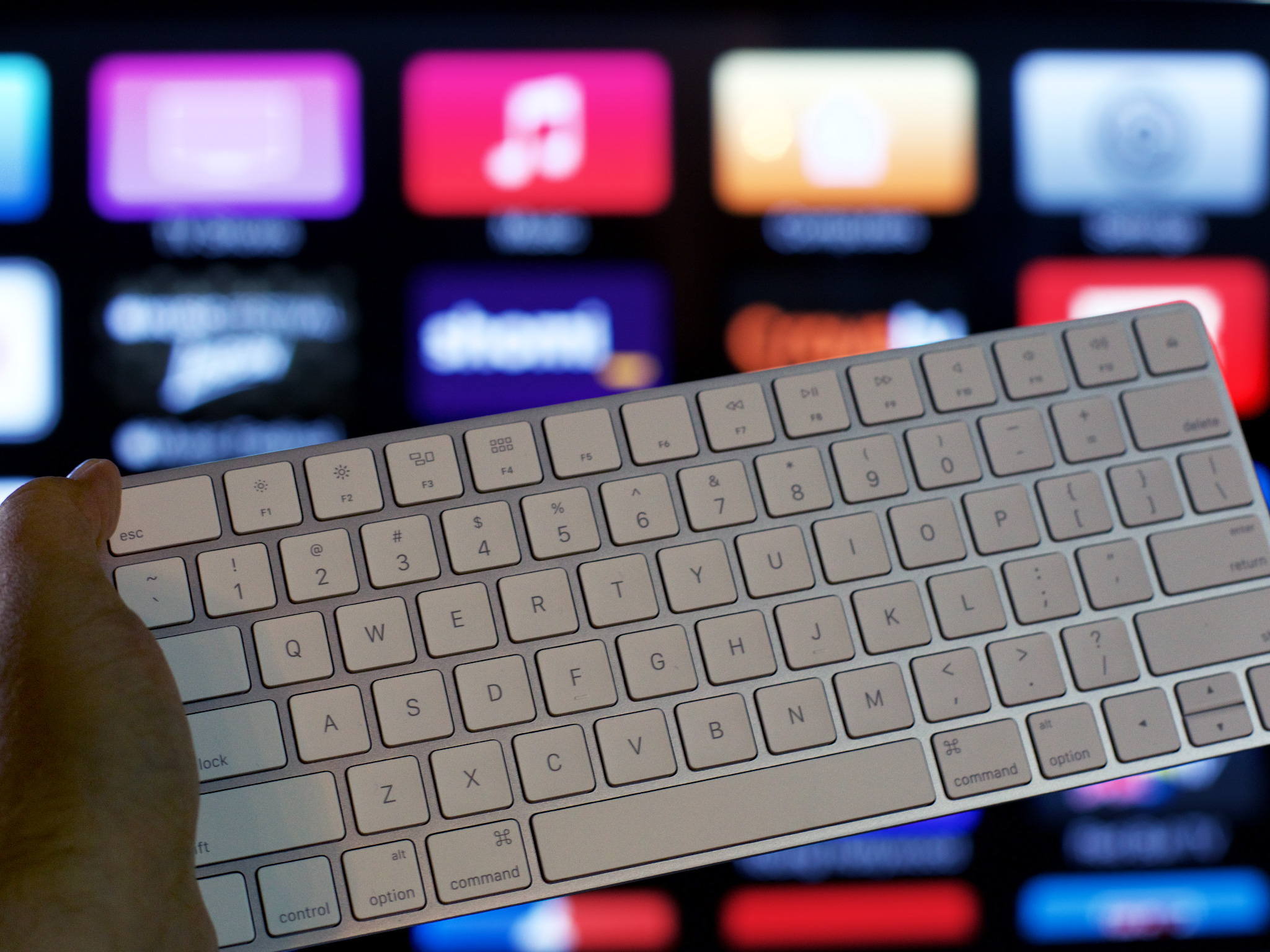
Pairing everything
- How to connect the Magic Keyboard to your Mac
- How to connect the Magic Keyboard to your iPad
- How to connect the Magic Keyboard to your iPhone
- How to connect the Magic Keyboard to your Apple TV (2012)
You can switch pairings on the fly, for example from your Mac to your iPad or Apple TV, simply turning the Magic Keyboard off and then on again. That'll kick it into discoverability, and you pair straight from there. Going back to a previous device, at least in my experience, requires you to forget the old connection before you can make a new one. That might be because whatever locked the old pairing has been killed a new handshake and lock is required.
Charging, of course, is done through that same Lightning cable. The charge lasts over a month so you won't have to recharge often. When you do, since the Lightning port is on the back of the Magic Keyboard, it doesn't stop you working.
Because a month is a long time, it's going to take me while to get a real sense of battery life and performance. I've been using the Magic Keyboard for all of three days now, and I've drained it of about 6%, and that's under heavier than normal usage and switching between multiple devices. I'll update this review every few months with notes on how it's holding up, though.
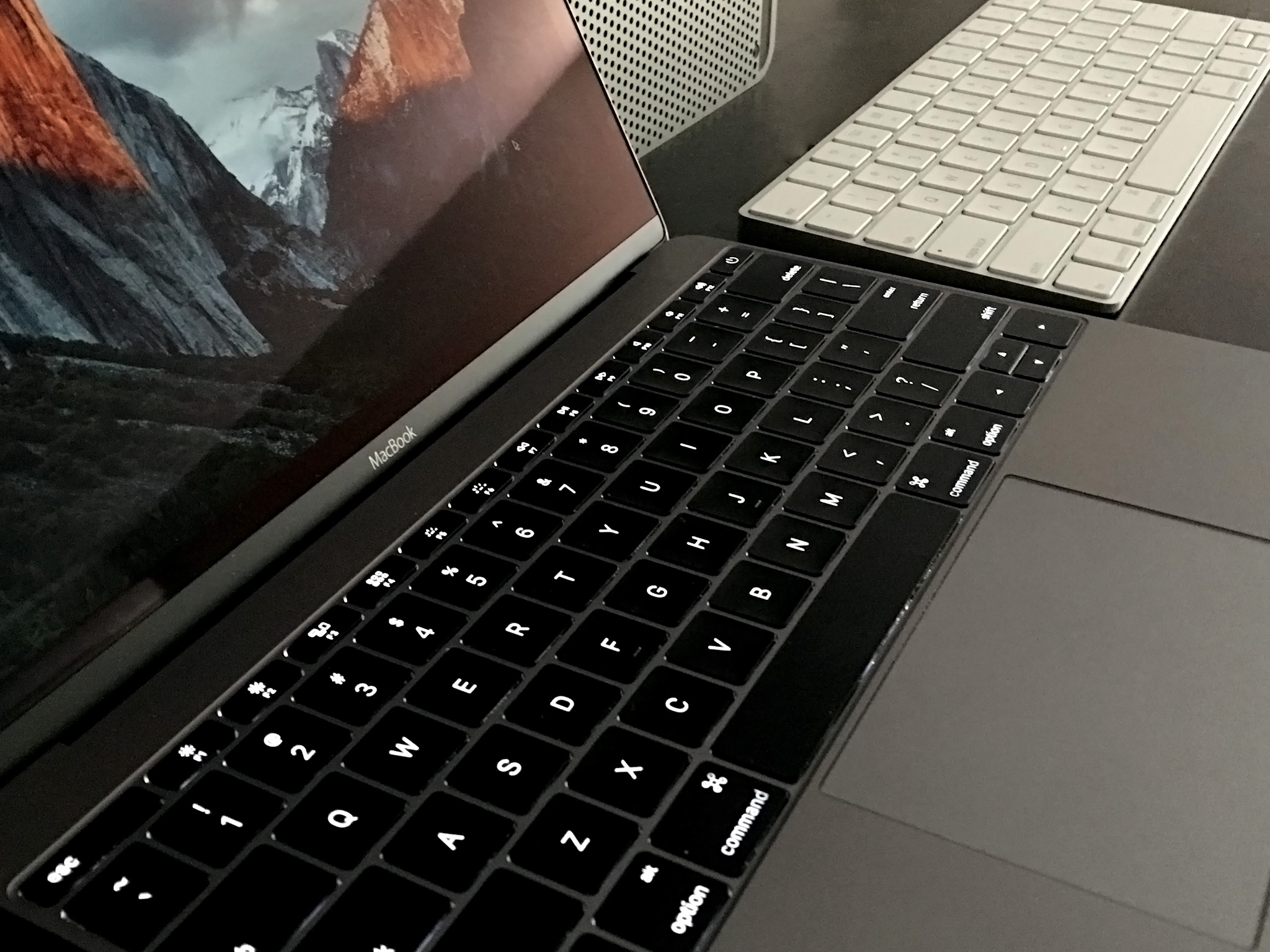
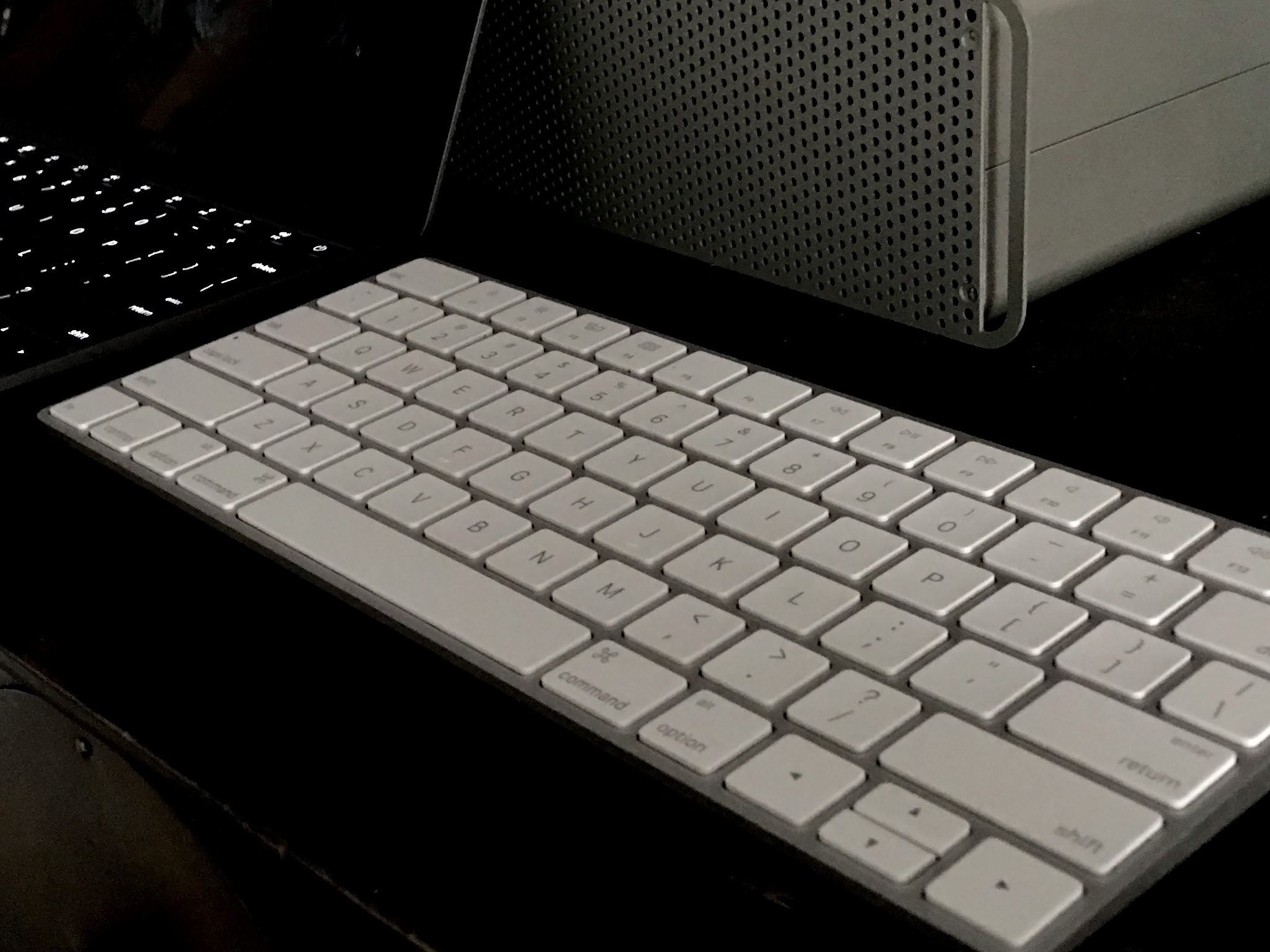
I don't know for sure, but I'd guess the long battery life has something to do with the lack of backlighting. Maybe when Apple can power the Magic Keyboard for over a month with backlighting, we'll get a version that does just that, but for now it's something I miss.
My studio can be dark and while I'm fortunate that I can "Hey Siri, turn on the studio lights!" whenever I want to, having just a little ambient light behind the keys themselves means I wouldn't have to. It would be just like using my MacBook. Again, consistency of experience.
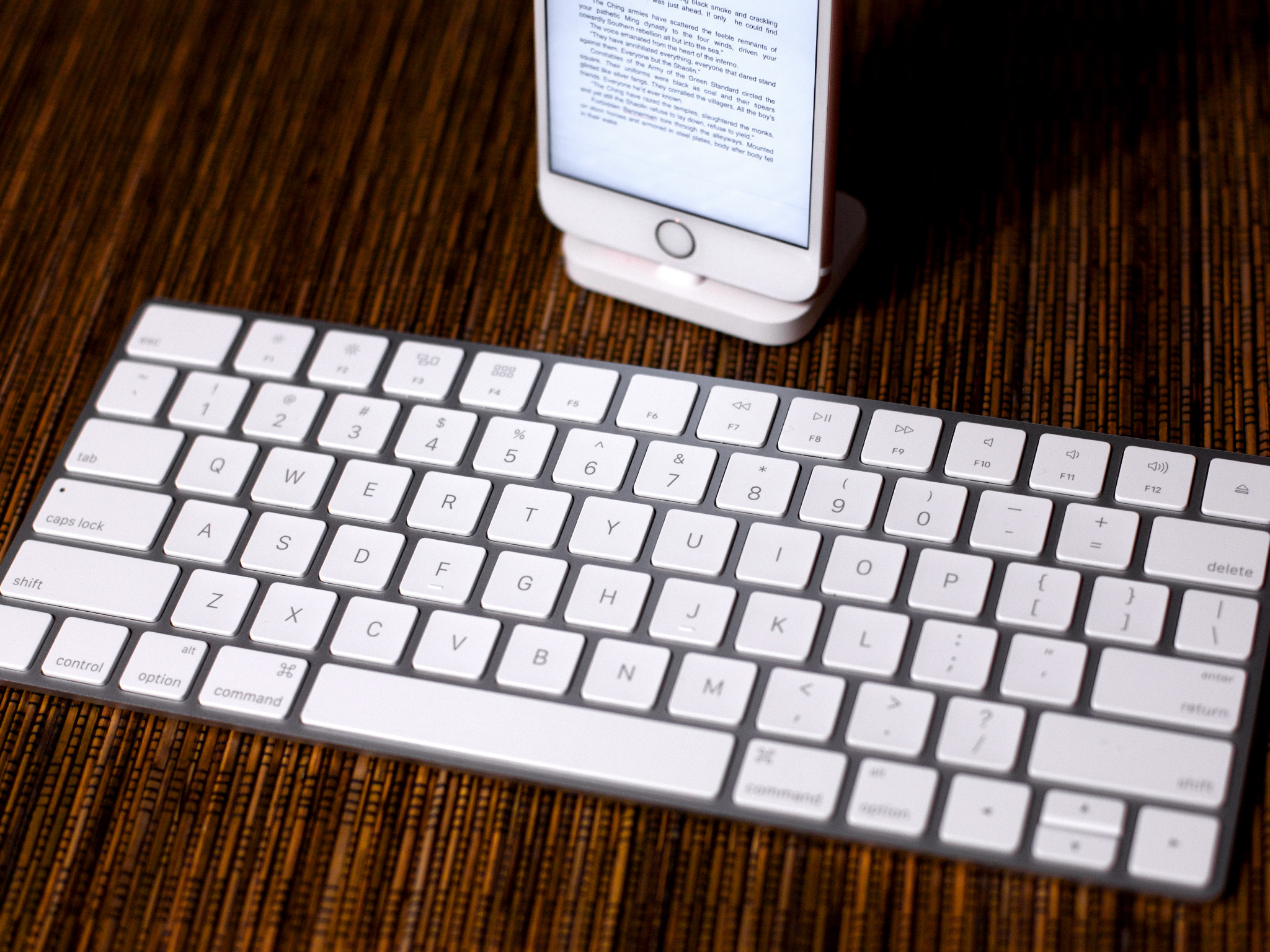
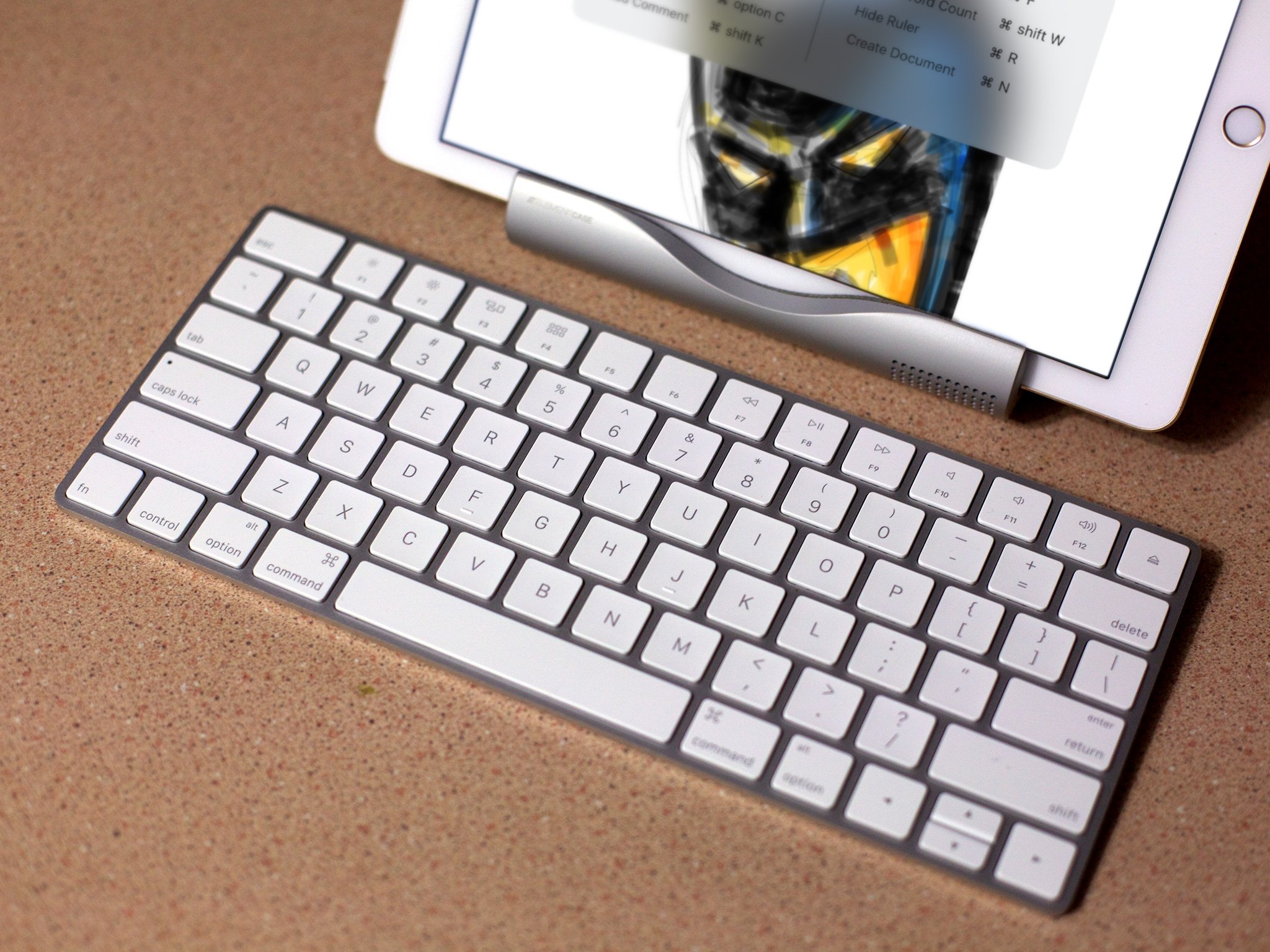
The new, smaller profile makes the Magic Keyboard even more portable for those who want to use it with an iPad or even an iPhone on the go. It doesn't double as a case the way some third-party iPad-specific keyboard do—or the way Apple's upcoming Smart Keyboard for iPad Pro will—but it's also full size and full depth.
Apple still disables auto-correct when you attach a physical keyboard, even though the Mac has had auto-correct now for years. It'd be great to have the option to re-enable it, especially for those who'd benefit from the accessibility aspects.
Other than that, if something like Incase's Origami workstation—which transforms from keyboard protector to iPad stand—is updated for the Magic Keyboard, it'll be a real contender for coffee shops and conferences alike.
When it comes to typing, it took me about 2 minutes to adjust to what small differences there are and then I was typing as quickly and happily as ever. And that includes typing out this review and entering my 1Password master password and OS X passwords numerous times. They're fairly long quasi-random blobs that require a lot of muscle memory to get right at speed. So, when those work without me thinking about it, then I know the keyboard is working for me.
Magic Keyboard Bottom Line
The Magic Keyboard is Apple's next-generation wireless keyboard. In every sense of the word. Technologically it incorporates Lightning for charging and quick-pairing, and new scissor mechanisms for better stability. But it also builds on what Apple has been doing with the MacBooks and especially with the MacBook.
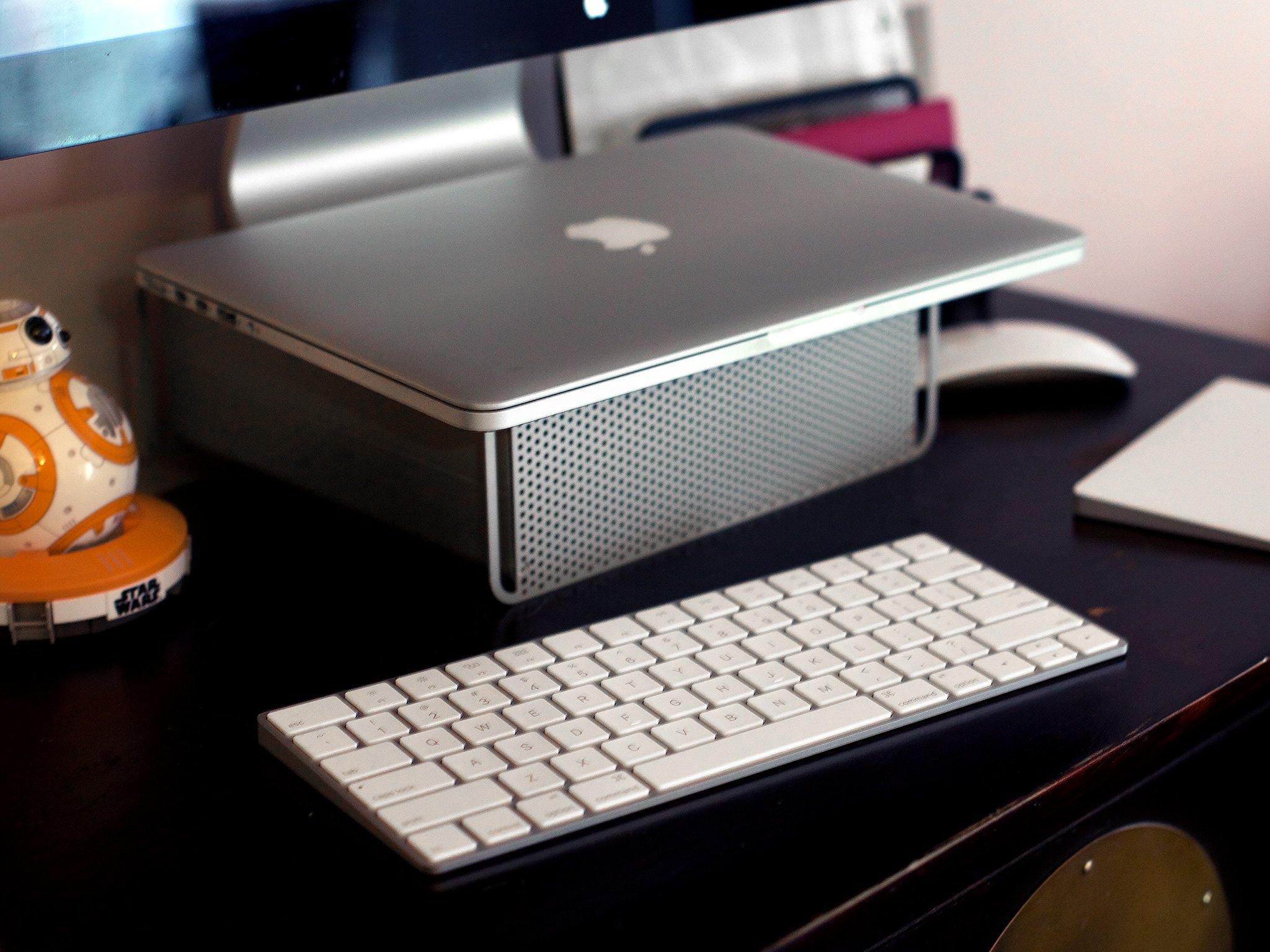
That's something important for anyone reading this review to consider—I like typing on the MacBook. I know some people who don't, but as someone who writes 40,000 words a month on average, and triple that some months, the less travel and the least amount of force I need to exert to get results is a huge plus.
And just like with the new MacBook, the more I use the Magic Keyboard, the more I like it.
When it comes to upgrading from the old Apple Wireless Keyboard, there's little functional difference, but the new design feels much more solid, the full-size function keys are nice, and the rechargeable lithium-ion battery is terrific. So is the ability to plug in to recharge, which kicks the stuffing out of scrambling for AA batteries just moments before a podcast is supposed to begin...
If what you want is something inexpensive, something with a split, ergonomic design, something with a number pad or with backlighting, or something with crunchy, clickety-clackity keys, then the Magic Keyboard isn't for you.
If you like typing on the MacBook Pro and MacBook Air keyboards, or the original Apple Wireless Keyboard, and if you like typing on the new MacBook keyboard, you'll like the Apple Magic Keyboard as well.

Rene Ritchie is one of the most respected Apple analysts in the business, reaching a combined audience of over 40 million readers a month. His YouTube channel, Vector, has over 90 thousand subscribers and 14 million views and his podcasts, including Debug, have been downloaded over 20 million times. He also regularly co-hosts MacBreak Weekly for the TWiT network and co-hosted CES Live! and Talk Mobile. Based in Montreal, Rene is a former director of product marketing, web developer, and graphic designer. He's authored several books and appeared on numerous television and radio segments to discuss Apple and the technology industry. When not working, he likes to cook, grapple, and spend time with his friends and family.
